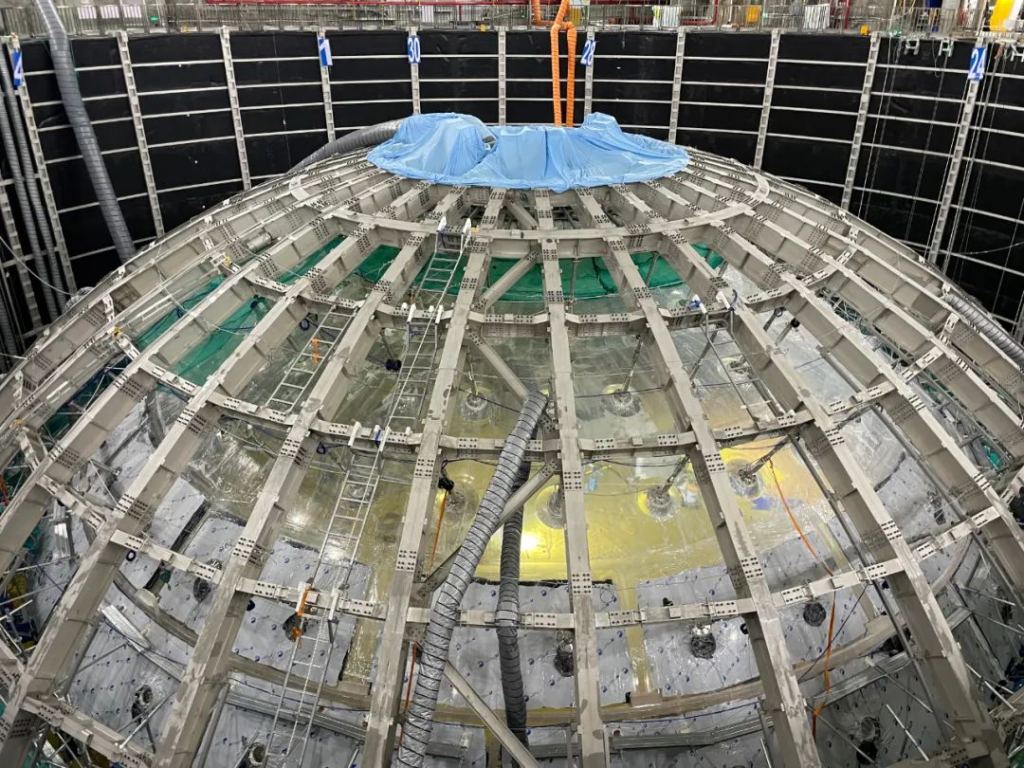The thing about a supernova is that you never know when it might occur. Supernovae are triggered either by a collision with another star or when the interior of a massive star becomes depleted of nuclear fuel and begins a rapid collapse. Neither of these show any major optical changes before the explosion, so we are left to scan the sky in the hopes of catching one in its early stages.
But that could soon change. For the second type of supernova, known as core-collapse supernova, there is an early warning. As the core of the star collapses, the rapid collision of nuclei triggers a tremendous production of both gamma rays and neutrinos.
The gamma-ray photons collide strongly with nuclei, which generates much of the pressure that eventually rips the star apart. But the neutrinos only interact weakly with nuclei, so most of them stream out of the star unimpeded. As a result, while the gamma-ray photons are starting to trigger the supernova, the neutrinos are already on their way to deep space.
This means that when a core-collapse supernova occurs, we experience a burst of neutrinos before the star begins to brighten as a supernova. We have seen this happen once before, when neutrino observatories detected a few events just before SN 1987a occurred. In that case, this was only realized long after the fact.
It actually helped us understand how neutrinos are generated during a supernova, but we couldn’t use it as an early warning system. By the time the neutrino detections were recognized, the supernova had already occurred. A simulated localization of a supernovae neutrino source.
Credit: CGTN But the Jiangmen Underground Neutrino Observatory (JUNO) hopes to change that. In a new paper on the arXiv, the authors discuss how JUNO should be able to recognize neutrino events in near real-time. Given the time delay of optical supernovae, this could be fast enough to localize the neutrino source quickly enough to alert other observatories.
These observatories could then focus their attention on a particular region of the sky to catch a supernova in the act. Based on the design of JUNO, the authors estimate there would be about a false alarm roughly once a year, but for real events, the system should be able to detect the neutrinos of the initial core collapse for a 30 solar-mass star more than a million light-years away. Even more impressive, the system could also detect the much fainter burst of neutrinos that occurs in the pre-supernova stage for a 30 solar-mass star up to 3,000 light years away.
So if Betelgeuse ever does go supernova in the near future, JUNO could tell us in plenty of time to grab our binoculars. JUNO is still under construction but hopes to come online by the end of this year or so. Reference: Abusleme, Angel, et al.
“Real-time Monitoring for the Next Core-Collapse Supernova in JUNO. ” arXiv preprint arXiv:2309. 07109 (2023).
The post A New Observatory Will Spot Core-Collapse Supernovae Before They Explode appeared first on Universe Today. .
From: universetoday
URL: https://www.universetoday.com/163242/a-new-observatory-will-spot-core-collapse-supernovae-before-they-explode/



